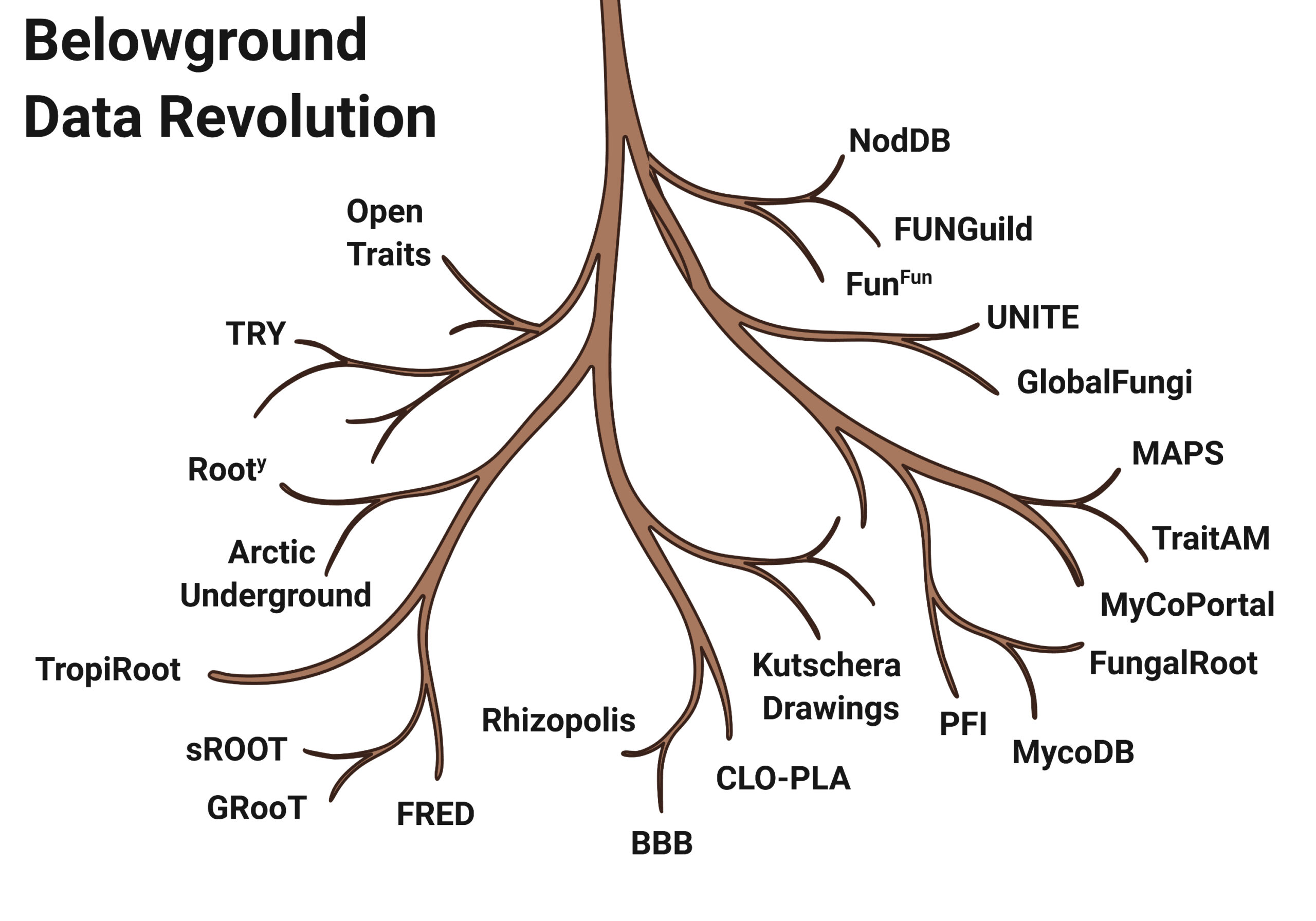August 18, 2021
Filling Gaps in Our Understanding of Belowground Plant Traits across the World
An introduction to a virtual special issue

Root and rhizosphere ecologists are experiencing a “Belowground Data Revolution,” in which the open sharing of belowground plant trait observations from around the world has greatly improved the field’s understanding of the intricate connections in the hidden world below.
[Reprinted with permission from Iversen, C.M., et al. "Filling Gaps in Our Understanding of Belowground Plant Traits across the World: An introduction to a Virtual Issue." New Phytologist 231(6), 2097–2103 (2021). [DOI: 10.1111/nph.17326] © 2021 The Authors New Phytologist © 2021 New Phytologist Foundation]
The Science
Researchers brought together the newest science that updates and adds to current understanding of the role of root and rhizosphere traits in broader ecosystem processes in a Virtual Special Issue that encompassed more than 40 papers published in New Phytologist over the last two years. Advances in scientific understanding of belowground plant traits ranged from new understanding of understudied processes and new observations from underrepresented biomes, like the tundra and tropics, to new and developing linkages among above- and belowground plant traits.
The Impact
The increasing number of belowground plant trait observations from around the world has greatly improved scientific knowledge of intricate connections in the hidden world beneath our feet. These observations are brought together in the Fine-Root Ecology Database (FRED), a freely available and searchable database (https://roots.ornl.gov) that focuses on narrow-diameter plant roots. FRED is at the forefront of a burgeoning ‘Belowground Data Revolution’ that spans topics ranging from fungal genomics to improving wheat yield.
Summary
The belowground world is one of the final frontiers in terrestrial ecology. The tangling of plant roots with the surrounding soil below is a lifeline for the humble forbs and towering trees above, and roots play a key role in shaping ecosystem carbon, water, and nutrient cycling. Ecologists have long sought to better understand the ecosystem-scale consequences of differing plant strategies, above- and belowground, by relating plant characteristics, or traits, to plant function. While developing trait–function linkages is arguably more difficult for plant traits that are hidden belowground, root and rhizosphere ecologists continue to fan out across grasslands and forests with their shovels, isotopes, and specialized cameras, seeking a better understanding of the secret lives of roots. Over the years, the international plant journal, New Phytologist, has served as a virtual town square for scientists to discuss their hard-won observations on the interplay among belowground plant traits, microbial activity, and edaphic and environmental conditions from biomes around the world. In a Virtual Special Issue that brought together more than 40 papers published in New Phytologist over the last 2 years, researchers highlighted the newest science that updates and adds to current understanding of the role of root and rhizosphere traits in broader ecosystem processes.
Principal Investigator
Colleen Iversen
Oak Ridge National Laboratory
iversencm@ornl.gov
Program Manager
Daniel Stover
U.S. Department of Energy, Biological and Environmental Research (SC-33)
Environmental System Science
daniel.stover@science.doe.gov
Funding
This work was part of the Terrestrial Ecosystem Science Scientific Focus Area (TES-SFA) at Oak Ridge National Laboratory (ORNL). TES-SFA is supported by the Office of Biological and Environmental Research’s (BER) Environmental System Science (ESS) program within the Department of Energy’s (DOE) Office of Science.
Related Links
- FRED, the Fine-Root Ecology Database
- Virtual Issue: Filling gaps in our understanding of belowground plant traits across the world
- Virtual Special Issue cover comes from SPRUCE belowground work (mnspruce.ornl.gov)
References
Iversen CM, McCormack ML.. "Filling Gaps in Our Understanding of Belowground Plant Traits across the World: An introduction to a Virtual Issue." New Phytologist 231 (6), 2097–2103 (2021). https://doi.org/10.1111/nph.17326.

